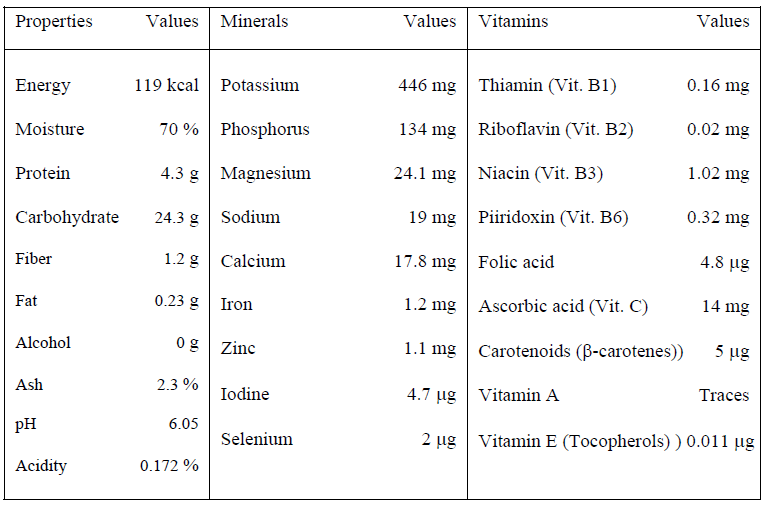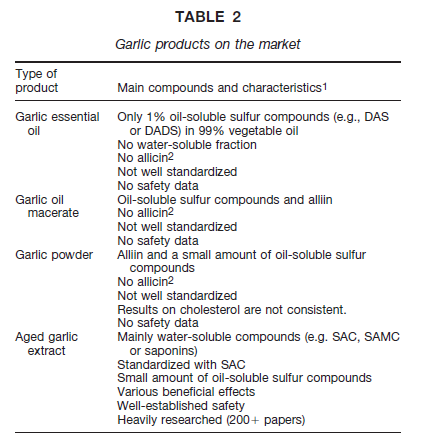
Global Garlic Market Research and Analysis
Garlic (Allium sativum) is an Amaryllidaceae family plant. Garlic is grown commercially by vegetative propagation and is temperature and day-length sensitive. Allium is legally placed in the Liliaceae family, which has 280 distinct genera and 4000 species. However, due to recent taxonomic changes, members of this genus have been assigned to Alliaceae. Garlic is one of the most ancient domesticated plants. Its likely parent appears to be A. longicuspis, a native of central Asian hilly regions that expanded to China, the Near East, and the Mediterranean before spreading west to Central and Southern Europe, Northern Africa (Egypt), and Mexico. Garlic farming is now found in almost every temperate region of the planet. Garlic is used as a spice and food component in cooking due to its ability to integrate well with a broad range of foods, imparting its aroma and flavour while enhancing the flavours of the foods paired with it. In addition to being used as a food, Garlic has long been employed in traditional medicine for defensive and therapeutic purposes. This blog focuses on scientific advancements and the Garlic production market.
Market Analysis
The worldwide garlic extract market was valued at about USD 11.86 billion in 2017 and is predicted to reach around USD 15.30 billion by 2024, rising at a CAGR of roughly 3.7% between 2018 and 2024.
Garlic is frequently cultivated as a winter/spring crop as well. The environmental needs for garlic cultivation include temperature, light, and moisture. Garlic is commonly grown in Pakistan, China, Korea, Indonesia, India, the United States, and Thailand. It is cultivated throughout Pakistan, including Punjab, Sindh, Khyber Pakhtunkhwa, Kashmir, Gilgit-Baltistan, and Baluchistan. It isn’t easy to obtain unlimited data for garlic oil output. Indonesia is the world’s leading producer of garlic oil. The majority of global garlic oil exports are destined for the European Union and North America. The trend of the product’s import, however, is revealed in US import statistics.
Garlic oil imports to the United States totalled 73 tonnes, with a 17% annual growth rate. The demand for garlic oil in the United States is estimated to be one-third of total world consumption. Garlic’s overall world demand is projected to be 219 tonnes per year. China is the world’s biggest producer of Garlic, with an annual production of around 20 million tonnes, accounting for 81% of global output. India ranks first with 4.6% for yearly world output, South Korea ranks second with 1.4%, Egypt ranks second with 1.2%, and the United States ranks third with 0.8%. Gilroy, California, produces a considerable amount of Garlic in the United States [1]. Due to the large consumption of garlic extract in the population’s daily diet, Asia Pacific is expected to dominate the worldwide market for garlic extract. In the forecast timeframe, the organized retail sector in metropolitan regions across the region is likely to boost the expansion of the garlic extract market. India and China are essential contributors to the Asia Pacific garlic extract market’s growth. Furthermore, increased consumer inclination for fast food consumption, expanding urbanization, and an expanding number of fast food outlets are important drivers expected to drive the Asia Pacific garlic extract market shortly.
In the forecast period, the garlic extract market in North America is expected to account for a sizable proportion of the worldwide garlic extract market. The region’s growing desire for natural and organic components in cosmetics and cosmetic goods is likely to drive up demand for garlic extract. Furthermore, corporations are investing in quality formulation, delivery methods, and packaging research. This, in turn, is anticipated to increase the growth of the garlic extract market in North America throughout the forecast period. During the projected period, the European garlic extract market is expected to rise steadily. The usage of garlic extract as a flavouring in food preparation drives the need for garlic extract in the Middle East and Africa area. Furthermore, the growing use of garlic extract in various sectors is likely to cause a market expansion in the Middle East and Africa over the forecast period.
Garlic functionality
The thousands of garlic brands on shop shelves may be divided into four categories: essential oil, garlic oil macerate, garlic powder, and garlic extract (Table 1). The production technique has a significant impact on the content of the garlic product. Manufacturers must ensure that garlic products are safe, stable, and effective. Documentation of the safety and efficacy of any items, including Garlic, recommended for use in health promotion is critical.
The chemistry of Garlic
TTable 1 lists some of the nutritional and chemical features of garlic bulbs. Garlic’s moisture, carbs, protein, fat, minerals, vitamins, energy, ash, pH, acidity, and essential oil content have all been determined. Garlic has a low moisture content as compared to caper bud and caperberries fruits and vegetables. Garlic has large quantities of potassium (21 g/kg), phosphorous (6 g/kg), magnesium (1 g/kg), sodium (532.78 mg/Kg), calcium (363.61 mg/Kg), and iron (52.91 mg/Kg) among minerals. Furthermore, Garlic includes the minerals selenium and germanium. The mineral mixture of the soil in which the bulb is grown determines the amount of these minerals in the bulb. Other significant chemical ingredients include riboflavin, thiamine, nicotinic acid, vitamin C, and vitamin E.
Table 1. Nutritional value and properties of Garlic (per 100 g of raw Garlic) [2]

Garlic supplements
Garlic supplements are divided into four categories: garlic essential oil, garlic powder, garlic oil macerate, and garlic extract (Table 2).
1) Garlic essential oil is made by steam distilling garlic and contains several sulphides such as DAS, DADS, and DATS.
2) Garlic powder is made by slicing or crushing garlic cloves, drying them, then pulverizing them into powder. Garlic powder is supposed to have the same compounds as raw Garlic (crushed), namely alliin.
3) Oil macerates were initially created to be used as condiments. There are two varieties of oil macerate products on the market, both packed in soft gel capsules. One may be prepared by simply combining garlic flavoured powder and vegetable oil. Another is prepared by mixing raw Garlic and vegetable oil.
4) To make garlic extract, soak whole or sliced garlic cloves in an extracting solution (filtered water and diluted alcohol) for varied periods. The section is usually concentrated and utilized after the separation of the solution. The extract can also be found in powdered form.
5) One of the most popular products is KYOLIC aged garlic extract (AGE). Raw Garlic sliced and steeped in a water/ethanol combination for more than 20 months is stored at room temperature to acquire AGE. It is mainly composed of the water-soluble sulphur compounds SAC and SAMC, with trace quantities of oil-soluble sulphur compounds.
Table 1: Garlic products on the market [3]

1Abbreviations: DAS- diallyl sulfide; DADS- diallyl disulfide; SAC-S-allyl cysteine; SAMC-S-allyl mercaptocysteine.
2Allicin is a volatile and reactive molecule that degrades quickly into other chemicals. As a result, no garlic product on the market has measurable levels of allicin (1 ppm).
Benefits
Although Garlic is generally used in cooking as a flavouring component, evidence may be helpful for a wide range of illnesses and disorders. Garlic intake is being pushed as an alternative therapy for some ailments due to the current trend toward using natural medicines with fewer side effects. However, before Garlic can be regarded as a safe and effective medication, more research on several issues is needed. Although garlic cloves are often consumed raw or cooked, various garlic nutritional supplements, including dried or powdered formulations, oils, and liquid extracts, have recently been introduced to meet consumer demand for bioactive garlic ingredients. It should be noted, however, that these components are highly reliant on garlic preparation. So no garlic dietary supplement can address the vast variety of biological activity documented here (Figure 9).

Figure 9. Multiple health-promoting effects of Garlic [2]
Recent Research in Garlic
1. Garlic phytochemicals for human immune system enhancement against illness [4].
2. Garlic preparations were analyzed using a unique multi-phytochemical methodology [5].
3. Fresh Garlic and black garlic extracts have high antioxidant and bacteriostatic activity [6].
4. Fish oil-Garlic essential oil encapsulated might be utilized to strengthen and prolong the shelf-life of food goods [7].
5. An aroma recombinant including the newly found acidic smells and other essential odorants demonstrated good agreement with the scent of aged garlic extract [8].
Future Scope
Future studies should also be conducted to standardize the active component concentration of garlic supplements. This would aid in determining the most effective dosage and kind of Garlic (dehydrated, aged, etc.) for the desired health-promoting impact. The quest for active preparations with minimal unpleasant odour and taste would allow this vegetable and its derivatives to be used as functional additives with therapeutic activity in various processed meals. For example, they might be used to produce highly consumed goods (e.g., fast meals or ready-to-eat meals) to provide antioxidants, prebiotics, mineral nutrients, and other minerals essential in preventing nutritional deficiencies. Finally, garlic products are sold as both food and herbal medicines. While garlic-eating is widely thought to be harmless, the toxicity of garlic supplements must now be proven before they may be used as bioactive goods. Uniform regulation of nutrition and health claims on foods is currently being implemented to develop a set of universally applicable standards for the scientific justification of these claims. This ensures that the client receives all of the nutritional and health-promoting benefits of an old natural remedy: Garlic, without danger.

Reference:
[1] Shumaila Saif, Muhammad Asif Hanif, Rafia Rehman, Muhammad Riaz, Chapter 23 – Garlic, Editor(s): Muhammad Asif Hanif, Haq Nawaz, Muhammad Mumtaz Khan, Hugh J. Byrne, Medicinal Plants of South Asia, Elsevier, 2020, Pages 301-315, ISBN 9780081026595, https://doi.org/10.1016/B978-0-08-102659-5.00023-9.
[2] Cardelle, Alejandra & Soria, Ana & Corzo-Martínez, Marta & Villamiel, Mar. (2010). A comprehensive survey of garlic functionality. 10.13140/2.1.4992.6728.
[3] Harunobu Amagase, Brenda L. Petesch, Hiromichi Matsuura, Shigeo Kasuga, Yoichi Itakura, Intake of Garlic and Its Bioactive Components, The Journal of Nutrition, Volume 131, Issue 3, March 2001, Pages 955S–962S, https://doi.org/10.1093/jn/131.3.955S
[4] Ashfaq, F., Ali, Q., Haider, M., Hafeez, M., & Malik, A. (2021). THERAPEUTIC ACTIVITIES OF GARLIC CONSTITUENT PHYTOCHEMICALS. Biological and Clinical Sciences Research Journal, 2021(1), e007. Retrieved from http://bcsrj.com/ojs/index.php/bcsrj/article/view/53
[5] Daniela Andrea Ramirez, Jorgelina Cecilia Altamirano, Alejandra Beatriz Camargo, Multi-phytochemical determination of polar and non-polar garlic bioactive compounds in different food and nutraceutical preparations, Food Chemistry, Volume 337, 2021, 127648. https://doi.org/10.1016/j.foodchem.2020.127648.
[6] Chang, TC., Jang, HD. & Lin, WD. Biochemical properties of black Garlic aged under different temperatures of commercial rice wine extracts in Taiwan. Food Measure 15, 509–518 (2021). https://doi.org/10.1007/s11694-020-00648-1
[7] Sara Raeisi, Seyed Mahdi Ojagh, Parastoo Pourashouri, Fabien Salau¨n, Siew Young Quek, Shelf-life and quality of chicken nuggets fortified with encapsulated fish oil and garlic essential oil during refrigerated storage, J Food Sci Technol (January 2021) 58(1):121–128. https://doi.org/10.1007/s13197-020-04521-3.
[8] Kazuki Abe, Takao Myoda, and Satoshi Nojima, Identification and Characterization of Sulfur Heterocyclic Compounds That Contribute to the Acidic Odor of Aged Garlic Extract, J. Agric. Food Chem. 2021, 69, 3, 1020–1026. https://doi.org/10.1021/acs.jafc.0c06634.





